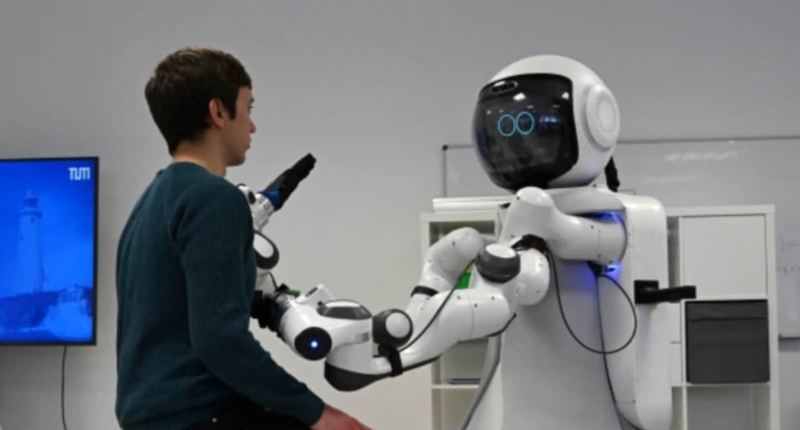Robots are being developed for elder care in Germany due to the shortage of health workers. Garmi, a white-colored humanoid robot, is a product of geriatronics, which uses advanced technologies such as robotics, 3D technology, and IT to develop solutions for geriatrics, gerontology, and nursing. The development of robots such as Garmi is seen as an essential solution to address the shortage of health workers in Germany, where an estimated 670,000 carer positions will be left unfilled by 2050. One of the major challenges in implementing robot caregivers is the question of trust. Patients need to trust the robot, and they must be able to use it like a smartphone. If patients can trust and use the robot, it could provide personalized care and treatment for patients, freeing up time for health workers to provide more individualized care. Although it is unclear when Garmi will be available on a commercial scale, scientists believe that the development of elder care robots is urgent.
Robots are Being Developed for Elder Care in Germany due to Shortage of Health Workers
With an estimated 670,000 carer positions left unfilled in Germany by 2050 and a growing need for care, researchers are turning to robots to assist with elder care. Garmi is a white-colored humanoid robot that can perform diagnostic tests, provide care, and treatment for patients. This robot is part of the emerging field of geriatronics, which uses advanced technologies such as robotics, 3D technology, and IT to develop solutions for geriatrics, gerontology, and nursing.
The Munich Institute of Robotics and Machine Intelligence has built Garmi with the help of medical practitioners, including retired German doctor Guenter Steinebach. Steinebach called Garmi a “dream” robot. Garmisch-Partenkirchen, which is home to one of the highest proportions of elderly people in Germany, is the location of the Technical University of Munich’s specialized geriatronics unit. The institute is racing to develop robots that can replace some of the tasks that are currently carried out by carers, doctors, and nurses, given the rapidly aging population in Europe’s most populous country.
Lead scientist Abdeldjallil Naceri, 43, said that they can imagine technology hubs that function similarly to ATMs for cash withdrawal, where people can come in for medical exams in the future. Doctors can evaluate the robot’s diagnostics results remotely, which is particularly important for people living in remote areas. The machine can also provide a personalized service at home or in a care home by serving meals, opening bottles of water, calling for help during falls, or organizing video calls with friends and family.
In the Garmisch laboratory, Steinebach uses a joystick to direct Garmi to perform tests on a test model in another part of the room. The robot then transmits the medical data to a screen. Other medical practitioners visit the lab regularly to provide feedback on the robot’s development.
Given the growing need for elder care, the development of robots such as Garmi could prove to be an essential solution to address the shortage of health workers in Germany.
Trust is the Main Challenge for Robot Caregivers in Elder Care, says Lead Scientist
Lead scientist Abdeldjallil Naceri is convinced that the statistics are clear: the use of robots in elder care is urgent. In 2030, he believes we must be able to integrate this technology into our society. The development of robots such as Garmi, a white-colored humanoid robot, is seen as an essential solution to address the shortage of health workers in Germany. However, the main challenge is not technological, medical, or financial. Instead, it remains to be seen if most patients will accept the robot.
Naceri’s team is working to teach Garmi to perform various tasks, including serving meals and drinks. The robot can also provide personalized care and treatment for patients, which would allow health workers to spend more time with residents. However, the question of trust remains a significant issue. Patients need to trust the robot, and they must be able to use it like a smartphone.
The Sankt Vinzenz retirement home in Garmisch, a partner of the project, is likely to see Garmi whizzing down its corridors when the robot is finally deployed. Eva Pioskowik, the director of the home, said she did not expect the robot to replace health workers. Instead, it could allow staff to spend more time with residents. The robot can perform tasks such as bringing meals, which can free up time for health workers to provide personalized care.
Although it is unclear when Garmi will be available on a commercial scale, Naceri is convinced that the development of elder care robots is urgent. The challenge is to ensure patients trust the robot, which is necessary for its successful implementation.
Don’t miss interesting posts on Famousbio









